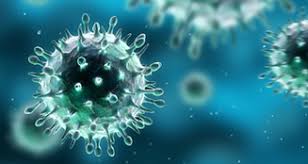I recently got around to watching a recorded episode of American Idol. Aside from all the melodrama associated with stress, sleep deprivation, and watching people who dream of living life in the spotlight compete against each other, I was struck by the fact that the episode was impressively reminiscent of the opening scenes from the movie Contagion. For anyone who hasn’t seen the movie, suffice it to say that the storyline is focused on the ensuing devastation invoked by the uncontrolled spread of a dangerous new virus.
Okay, so no one died on American Idol’s Hollywood Week episode. But I did experience the same sense of foreboding. Idol contestants shaking hands, exchanging frequent high-fives, offering each other lots of hugs, and just generally partaking in a whole lot of close contact also known as germ-sharing behavior. Worse yet, there was a clearly identified “Patient Zero” in the mix – runny nose, fever, fatigue and all. If germs were visible, I’m pretty sure any viewers who somehow missed the not-so-subtle foreshadowing by the shows producers would have been cringing along with me long before contestant after contestant proceeded to fall ill.
Hmmmm…If only germs were visible…Now there’s a thought. I majored in cellular, molecular biology, so I’ve admittedly had more opportunities to visualize germs than most. But the concept of helping people – even young children – be visually reminded of the presence of germs isn’t out of reach. In fact, there are even cool (and relatively inexpensive) soaps and science kits that help children (and adults) visualize just how effective (or ineffective) they are at washing germs off their hands.
It is my sincere hope, however, that it won’t take actually visualizing germs for all of us to take stock in what simple measures we already know are effective in preventing the spread of germs. For a quick refresher, let me spell them out for you so you will have them at your (hopefully clean) fingertips! After all, the truth about the “Idol Bug” is that it was likely just another (admittedly nasty and poorly timed) virus making the most of making people sick. More than just another virus, however, it was also a really good, attention grabbing reminder for the reported 19 million that we’re still in the middle of cold and flu season, and that the sharing of germs that happened in Hollywood while the cameras were running could happen anywhere – especially to those who neglect to take the following actions!
Wash your hands with soap and water. Handwashing is particularly important not only before eating and after using the bathroom, but any time you or your children are sick or come in contact with people who are sick (or germy surfaces like grocery cart handles). And don’t just settle for a quick rinse. Lather up the soap and be sure to get all areas of the hands – both front, back and in-between fingers.
Cover your cough. I can tell you from lots of child-care-owning experience that it’s entirely possible to teach even very young children to not only cover coughs, but to do so with their arms rather than their hands. They may not get it right early on or every time, but over time they’ll pick up on this very important form of prevention. The fewer illness-causing germs that are coughed into one’s hands, the fewer that stand to contaminate surfaces or get shared directly with others.
Vaccinate. I often get asked longingly in interviews about whether or not we’ll ever discover how to prevent the common cold. I agree that this would be nice, as the symptoms associated with the common cold can certainly be quite pesky. But the severity of the common cold is nothing compared to all of the vaccine-preventable diseases (think measles, mumps, rubella, diphtheria, tetanus, polio) we are now able to effectively prevent. Simply put, vaccination is deserving of its recognition as one of the biggest public health success stories of the past century.
Avoid contact with those who are ill. Within reason, that is. That means that when you’re sick, it’s best to limit contact with others whenever possible – especially in the first days of an illness, when you have a fever, the flu, or other significant symptoms likely to spread germs and infect others (such as a lot of coughing).
Disinfect contaminated surfaces. Think snotty tissues on the nightstand, door knobs, telephone receivers, or any other high-traffic surfaces that are likely to have come in contact with unwashed, germy hands. Germs can live for hours (and in some instances, days), so don’t forget to disinfect contaminated surfaces.
Originally posted on Omaha World Herald’s Live Well Nebraska
